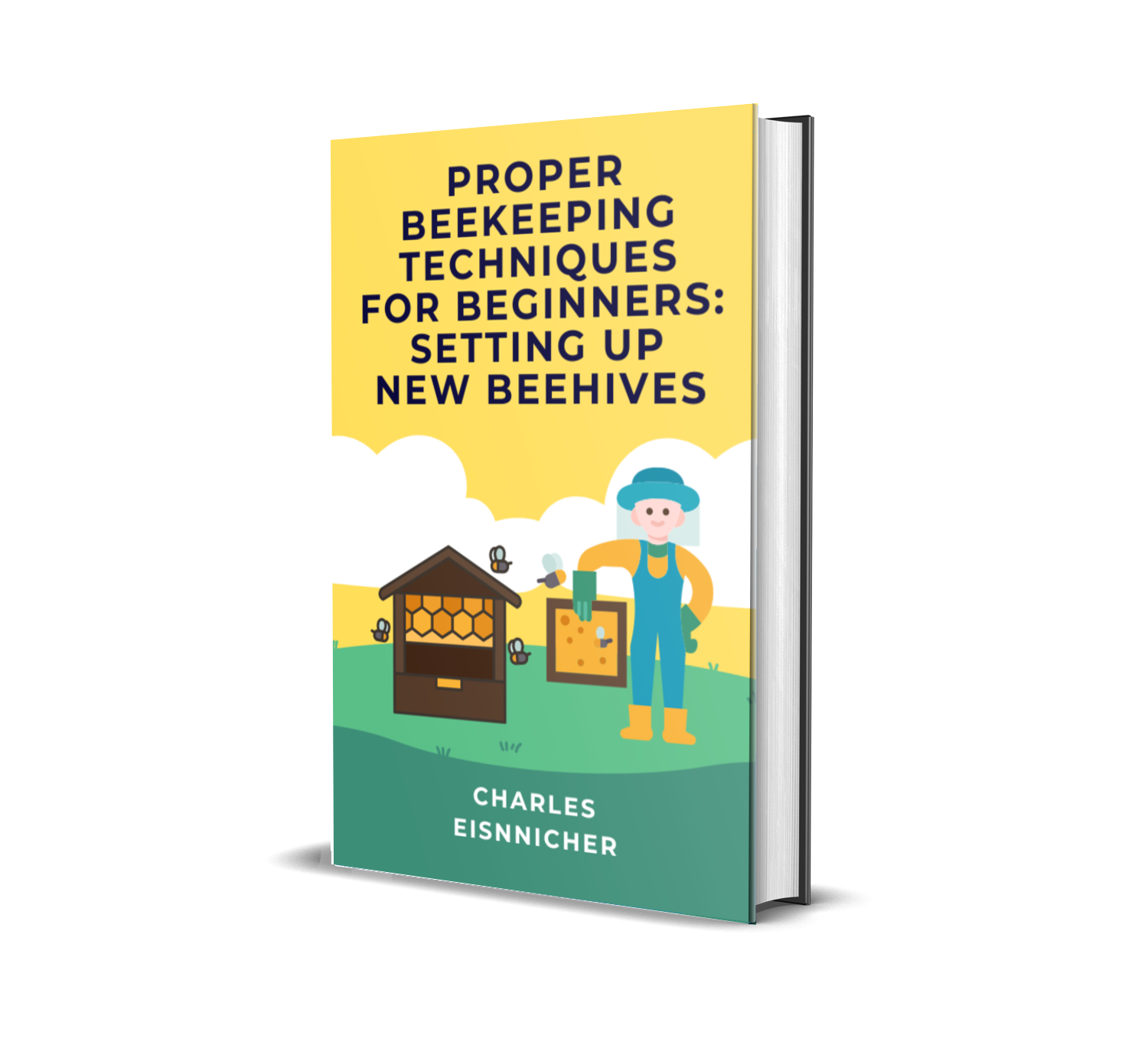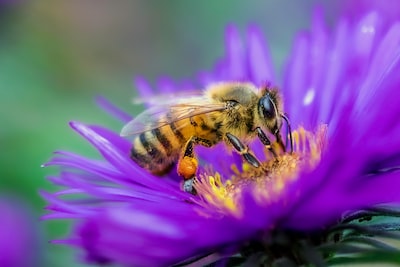The bustling of honey bee apiaries is an exciting and fascinating force of nature that many are unaware of. Across the world, beekeepers tend to and harvest from these apiaries to create honey, bee pollen, and other bee-related products.
Honey bee apiaries are a crucial part of the health and sustainability of our environment, relying on a well-oiled system of bees sustaining themselves and their beekeeper to create delicious, natural offerings.
Experience a fascinating view of the natural world with a visit to a honey bee apiary! Immerse yourself in the unforgettable buzz of the bees, curiously exploring and gathering sustenance to tend to their bustling hives. Witness a well-orchestrated system of bee communication and coordination that sustains the highly efficient operation of their bustling home.
Get up close and comfortable to these amazing creatures, observing their exciting habits and intriguing behavior. This intriguing article will dive into the fascinating activity within a bustling honey bee apiary, and the rewards of spending time in the presence of these beloved creatures.
Table of Contents
Introduction to Apiary Farming
Apiary Farming, also known as beekeeping, is a fascinating and rewarding practice. With an ancient history, beekeeping is an important field of study as it relates to ecosystems, food production and sustainability.
It involves nurturing and raising bees, as well as understanding their biology, anatomy and behavior. Beekeepers use specialized technology and techniques to manage colonies and harvest their honey.
Through apiary farming, beekeepers can protect these important pollinators, which is essential for the future of global food security.
Overview of Honey Bee Behavior and Communication
Honey bees are a species of social insect that have complex behaviors and ways of communicating. They have the ability to move quickly, collect food, and fly in large swarms.
Bees communicate using a type of dance, known as the waggle dance, to alert others to specific locations of food or a new nesting site. Furthermore, they use pheromones to communicate boundaries, alert other bees to danger, and mark flowers for foraging.
Additionally, honey bees are able to remember and recognize individual animals, even human faces. This recognition extends to nest-mates who become familiar during an individual bee’s lifetime.
All of this communication, recognition, and behavior indicates that honey bees are surprisingly intelligent and talented creatures.

Get A Free Downloadable Ebook To Teach You How To Set Up New Beehives
Give Me My Free eBookThe Benefits of Apiary Farming
Apiary farming, the practice of caring for honeybees to harvest honey and other byproducts, offers many potential benefits. As pollinators, honeybees provide invaluable environmental services: contributing to the growth of food crops, wildflowers, and other plants.
They also create flavorful honey as well as beeswax used in cosmetics, candles, and furniture polish. Honey collected from hives may also contain enzymes, vitamins, and minerals beneficial to health.
As hive owners, farmers manage colonies to maintain the health of bees and their productivity, possibly even increasing yields when done properly. Overall, apiary farming offers advantages not only to farmers and the environment but also to consumers.
The Benefits of Eating Local Honey
Eating local honey offers a variety of health benefits that are often overlooked. It contains probiotics and polyphenols, the former which offer relief from indigestion and constipation, and the latter which can interfere with the growth of disease-causing bacteria and viruses.
Honey contains naturally occurring enzymes that help in digestion, and it is an antioxidant, reducing oxidative stress in the body. Local honey can also improve allergies due to pollen, as it helps build immunity to local pollens.
Additionally, local honey has been found to increase energy levels and decrease stress. Its soothing properties also make it ideal for treating sore throats and other common ailments.
Utilizing local honey is a delicious, natural way to improve both physical and mental health.
Apiary Tour Strategies
When visiting an apiary, it is important to strategize and plan an effective tour. First, consider the size of the apiary and group size: if the apiary is small, it is best to keep the group size to fewer than five.
If the apiary is larger, it is important to adjust the tour and landmarks accordingly. In addition to considering the size of the apiary and group size, visitors should consider a range of other factors.
These include the time of day and season, the peak-foraging period of the bees, the communications style used by the beekeeper conducting the tour, and the educational level of the group. By taking these steps into account prior to the tour, visitors can ensure that the tour is most effective for all.
Safety Precautions When Visiting an Apiary
When visiting an apiary, it is important to put safety first. Wear appropriate clothing: long pants, thick socks and closed-toed shoes, and a long from collared shirt.
Beekeeping gloves are also recommended. Additionally, be sure to wear a veil in order to protect your head and neck from being stung.
If you are allergic to bee stings, it is best to not visit the apiary and to contact a local beekeeping professional. Be mindful of your movements and the direction of the wind and plan your path in the apiary.
Finally, avoid lighting up, as the smoke and accompanying vibrations can alarm the bees. Taking these safety precautions will help you and the bees feel safe and protected!
Beehive Products and Uses
Honeybees are an integral part of the global ecosystem, and humans have utilized their honey and wax production in a variety of ways throughout history. Beekeeping has become increasingly popular in recent decades as people recognize the vital role bees play in their lives.
Through beekeeping, honeybees are managed in a beehive, which is a structure designed specifically to house bee colonies. The wax produced by honeybees can be used to construct beehive frames and honeycomb, while the honey produced from these eco-friendly factories can be harvested and consumed, as well as used as natural sweeteners in household items, such as cosmetics and candles.
Aside from the obvious culinary uses, honey is also known for its medicinal properties and is used in natural remedies for a variety of ailments, making beehive products a uniquely sustainable and multi-purpose resource.
How to Extract Honey
Extracting honey from beehives is a process that requires patience, skill, and safety precautions. Careful planning and an understanding of the honey bees’ behavior are necessary.
To begin, a smoker is used to calm the bees and make the extraction process easier. Protective gear and clothing should be worn including a veil to protect the face.
Next, the frames of honey comb are removed one at a time. The frames are placed into a centrifuge, and the honey is spun out of the comb.
Once the honey is successfully spun out, it is strained and placed into jars or containers for storage. With careful planning and respect for the bees and their hives, honey extraction can be an effective and rewarding experience.
Caring for Bees
Caring for bees is essential to helping them thrive. We can do this by providing them a safe, comfortable place to live.
Beekeepers can do this by placing hives in natural areas, away from pesticides and other contaminants. The ideal spot to place a hive should be protected from the wind and direct sunlight.
Also, to offer necessary nutrients, beekeepers can plant a variety of flowers and flowering trees near the hives for forage. Additionally, to support healthy bee populations, beekeepers should regularly monitor the hive population and check for any illness or varroa mite infestations.
Beekeepers also should give their bees a regular checkup with a microscope to make sure the hives are healthy. Lastly, beekeepers should remember to provide clean water near the hives as it is essential to bee well-being.
With proper care, bees will be able to flourish and continue to be a vital part of the ecosystem.
Supporting Your Local Apiary
Supporting a local apiary is an important and rewarding way to help the environment. Apiaries provide beekeepers with an opportunity to cultivate crops and honey, while also playing an essential role in the pollenation of these crops.
The ongoing decline in bee populations across the world is concerning and calls for action. Consuming local honey, purchasing items from the apiary, or even volunteering your time can be a great way to show your support.
Small contributions can make a significant difference in the livelihood of local beekeepers and the health of our ecosystem.
Closing Remarks
The honey bee apiary is a cornerstone of farming and gardening, providing invaluable resources and pollinators. It is also a great way to learn and gain hands-on experience with beekeeping and to support local sustainability efforts.
Whether you decide to build your own from scratch or purchase a pre-packaged starter kit, a honey bee apiary is a wonderful way to promote healthy ecosystems and cultivate your own connection with nature and the environment.
Charles

Get A Free Downloadable Ebook To Teach You How To Set Up New Beehives
Give Me My Free eBook










